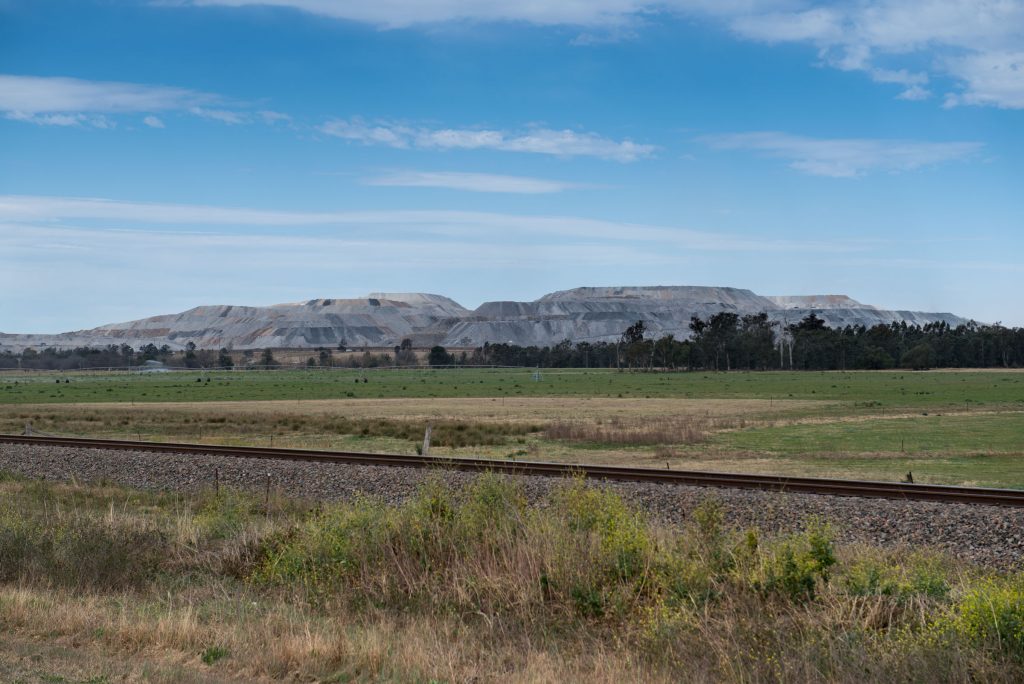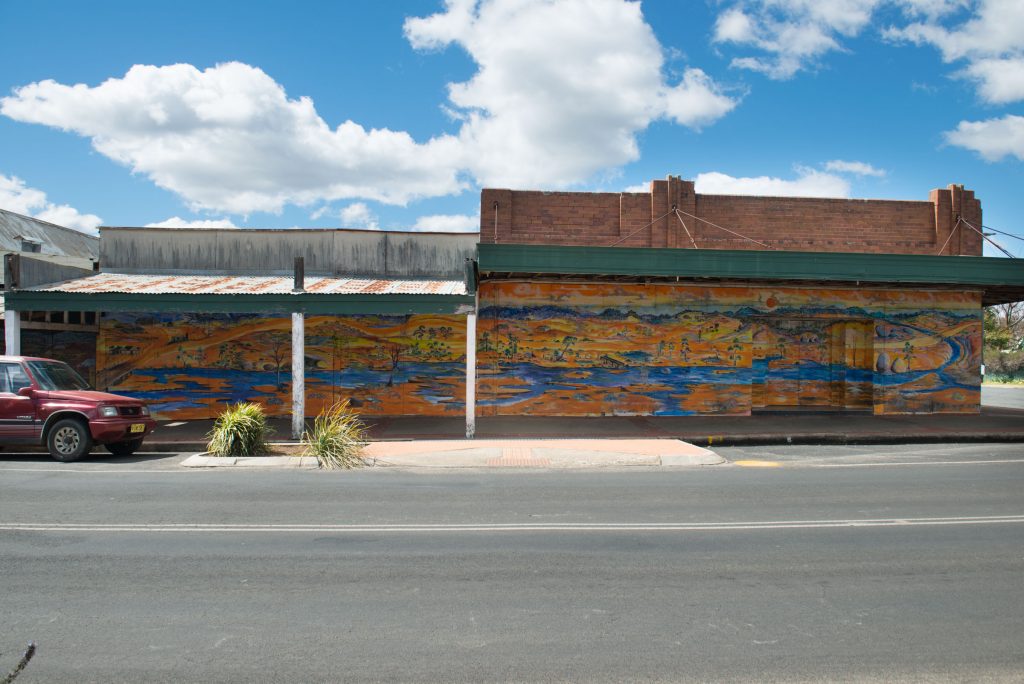So we had a long drive getting to the living classroom. It was a lot of fun, driving along narrow country roads that wound through the endless valley. It was a little bit of a shock, finding myself in the car with Laura and the first hour of the so was composed of an almost frenetic conversation about everything and anything we had been thinking about or doing for the last several months. After a while though we relaxed and took in the country we travelled in. It was especially luxurious for me who usually travels alone and in a hurry across the regions and never stops for photographs of all the odd things that pop out of the bush at you as you pass. We stopped along the way, starting with the Great Wall of Slag that greets every traveler entering the Hunter Valley from the south. It seems an almost intentional monument to our destructive relationship to the environment. If you can get past the feeling of despair it projects, the thing has a formal beauty that I cannot deny. So I snapped a photo and passed by.
Mountains of Slag frame farmland in the Hunter Valley. photo Alex Wisser
We arrived after dark and settled in. Gary met us not long after and dragged us out to the Imperial Pub for a drink and a feed. Laura was able to secure a decent salad and Gary and I partook of the perennial pub steak. A couple beers to wash the road out of my muscles and had a lovely conversation with Gary about class divisions in small towns, art and farming and anything else that occurred to us. It was good to settle in to this informal social mode, to speak of things we shared concern for, outside of the business-like negotiations of a project. It is customary to neglect these small social engagements, ancillary to the main business at hand, but for me, this is where I do my best work, usually by talking too much and too loudly. It was nice to bring the relationship to the level of a relationship.
Day 2
Rick Hutton, Garry McDougal and Laura Fisher at the dreaded white board. photo Alex Wisser
The morning was much more business-like. There were white boards and discussions about budgets. It reminded me how important it was to do things like this, traveling 8 hours for a day and half of talking face to face to people before driving another 8 hours home. The discussions were frank and friendly, and by the end I felt we were a more coherent whole.
Rick Hutton, Laura Fisher, and Garry McDougal tour The Living Classroom. photo Alex Wisser
The project had originated mostly on the KSCA side, with the selection of artists and participants and the development of individual artwork ideas. The speed with which Rick and Gary were able to inhabit the space this initial work opened for them was impressive. They filled this space with the interests and concerns that belonged to their own project as well as bringing new resources and potentials to the table. The result at the end was a sense that we had overcome that awkward first stage of a partnership in which two parties stand in contrast to one another, each addressing an unknown entity across the palpable distance that separates them. It was impressive how they were able to join into the design of a thing already underway and assume a pace with it, naturalising their contribution. In the end it felt like there was one team and one project.
Garry McDougal, Rick Hutton and Alex discuss his proposal to dig a hole as a permanent artwork at the living classroom. Alex is standing in a hole dug a hundred years ago by prospectors testing for gold. We thought it might be a perfect location, given that the work has already been started for us. photo Laura Fisher
After that Laura and I piled into the car and drove out to Tingha to meet with Caroline Downer, Regional Arts Officer (RADO) for Arts North West and Greg Livermore of the Anaiwan land council. Tingha is a charmer, one of those contracting townships that despite the closed shops still radiate a cheerfulness that you cannot resist.
The Tingha mural. photo Alex Wisser
The Tingha mural, continued. photo Alex Wisser
The fact that a brightly painted mural of the area stretched across nearly two blocks of the Main Street didn’t hurt the impression.
The original grocery store/emporium is now a museum. photo Alex Wisser
And then there was this place
Every small town needs a folly. photo Alex Wisser









































